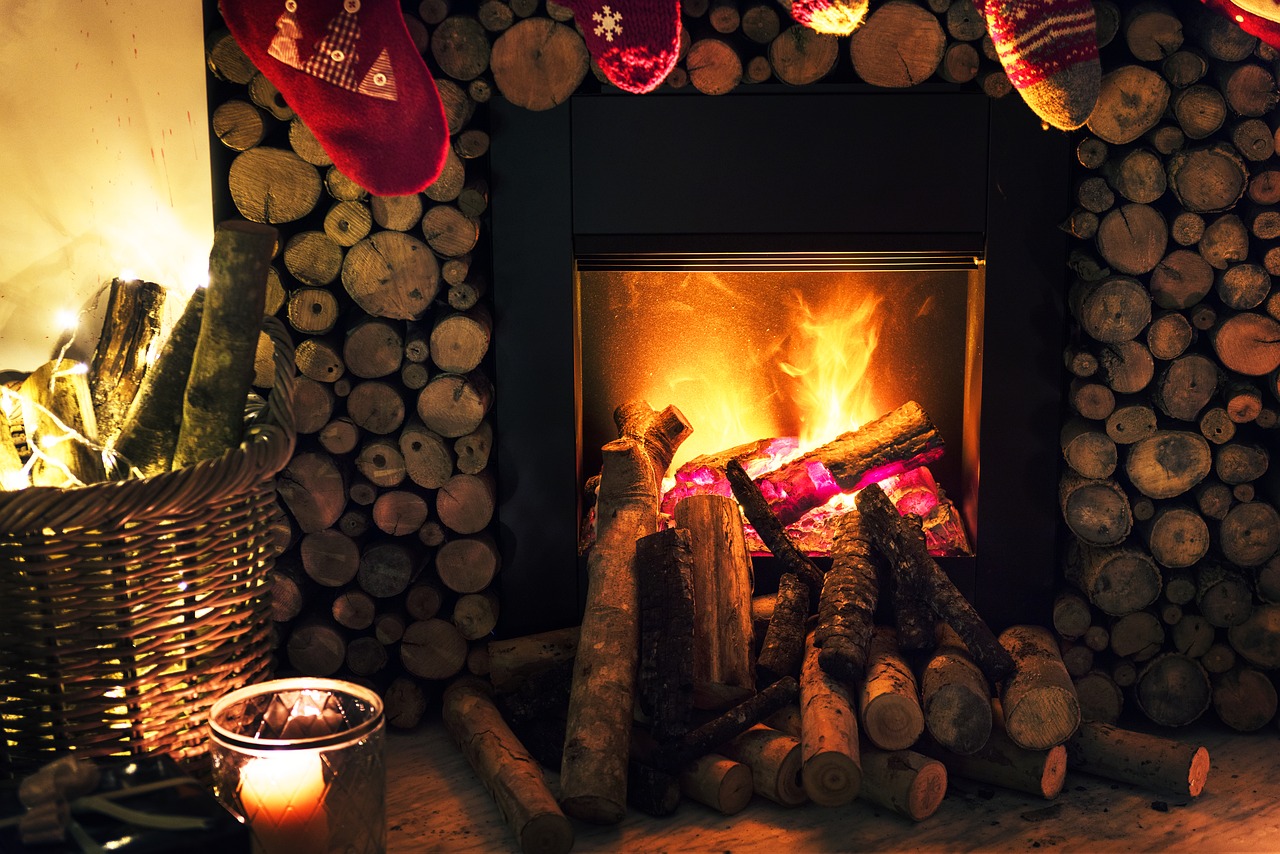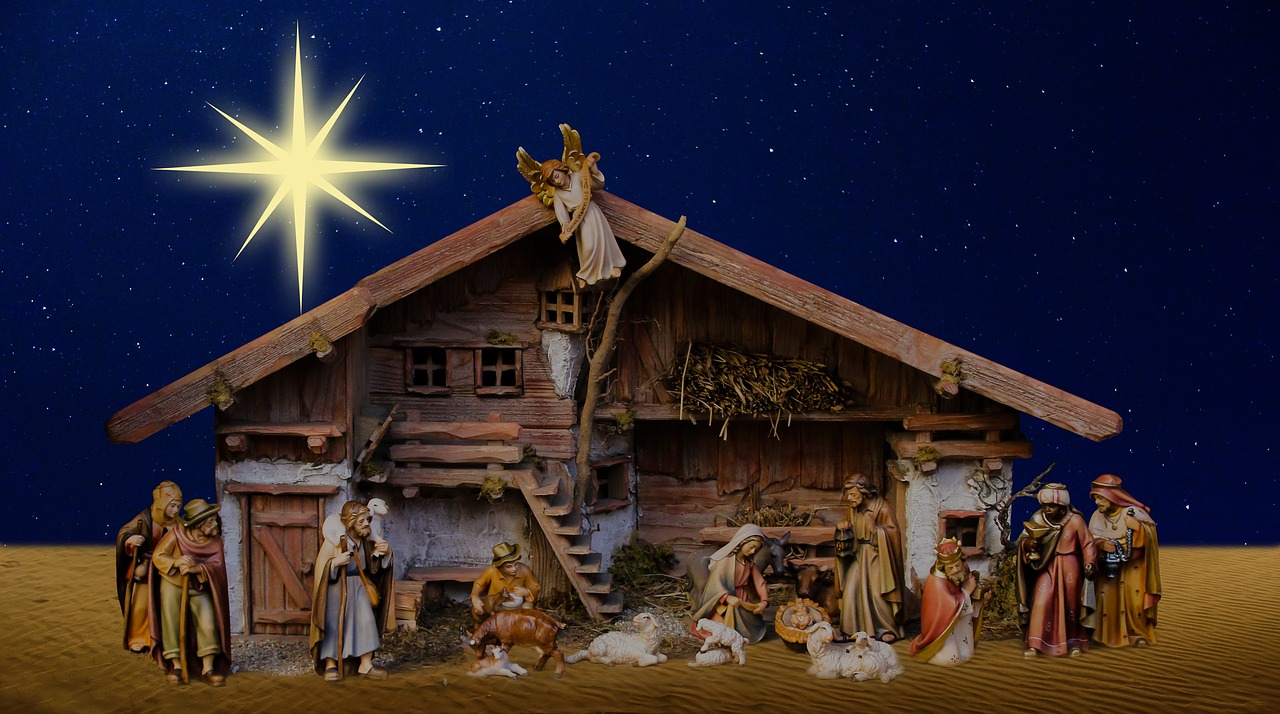Very little is missing from the celebration of Christmas and everyone is preparing to welcome one of the most anticipated celebrations of the year. Streets and shop windows are filled with festoons, the houses are preparing to host cribs ed abeti, the gardens flash with colored lights. But how are these born traditions? Let's find out together with a time travel that crosses the borders of the various Italian regions.
The Christmas fire
It is now common knowledge that many of the religious holidays they are a reinterpretation of ancients pagan cults. To understand more, however, let's try to peek inside a house from the early twentieth century where we were preparing for the celebrations for the birth of the Child. It all started on the morning of Vigil when you ran to the attic to choose the oldest log, the one that had been seasoning for at least five years.

Then do the housework, so that the house was ready to welcome Jesus, in the evening the family gathered around the fireplace. Here prayers were recited, warmed up and in tune songs while from the burning log flames of various colors were released. The ashes of the Christmas fire had to be kept because they were useful to protect the house from bad luck and disasters. This simple gesture is the memory of an ancient pagan festival, the one that celebrated on the date of 25th December il winter solstice. The ritual involved burning a shard of wood, symbol of proliferating nature and conserving its fragments, a metaphor for a fruitful year. From north to south this tradition was repeated for many years and completed in some regions of ours Noon, from scattering the ashes among the fields in favor of one fertile spring. If the custom of the Christmas fire has been lost today, it is certainly true that the fireplace remains the central point of the house around which to set up the main Christmas decorations and, why not, light a fire that at least heats up and gives an extra pinch of atmosphere to the spirit of Christmas.
The Fir
There is no house where the classic is missing Christmas tree, once decorated with tangerines and dried fruit, today with multicolored balls and colored lights. But even this tradition has its own origins in ancient legends, among the many, I choose to tell you about one of the most suggestive in the popular imagination. Like in a fairytale, in a remote time, a small country village stood near an old forest.

Here lived a peasant family whose young son, on Christmas Eve, left the house in search of the strain for the christmas fire. Entering the woods, the boy did not notice the passage of time and soon found himself lost in the darkness of the forest. Afraid and trembling, he sought shelter at the feet of a fir, the only tree whose branches were still laden with sharp green needles. Protected by the warm embrace of the large plant, the child found a bed for the night. The next day the whole village went in search of the boy and, finding him nestled at the foot of the tree, decided to pay homage to the fir by decorating it with scarves and gloves. Today, most Christmas trees are artificial. The choice is wide: numerous models of different heights available in green or white can be equipped with the most varied decorations. From the balls Eighties with bright colors, with refined decorations in blown glass up to the most current shabby style in natural colors. Today the tree is above all an object of tradition influenced by the tastes and fashion of the time.
The crib: story of an old shepherd
If the tradition ofChristmas tree it is considered a remnant of ancient pagan practices, the same cannot be said for the crib. Its diffusion is due to San Francesco d'Assisi who returned from Palestine he wished to bring home the spirit of birth of Jesus. Francesco was struck by the description of the Nativity told in the proto-gospel of James: in that moment everything seems to stop, people, things, gestures… everything is slowed down, suspended, crystallized. The crib not by chance it is static.

Initially composed of statuette in cardboard among which the figure of the Child stood out, the only one in plaster, the crib was usually placed in a raised corner of the kitchen on a carpet of green moss. Today it consists of numerous pieces, one of them cannot be forgotten Gelindo, the shepherd carrying the sheep on his shoulders. Surely you will have it too! But why is this figure inevitable in the cribs of many Italian regions? Here too you get lost in traditions. It seems the origin is piedmontese and then extended to Liguria, Lombardy, Veneto, Tuscany and Emila. So who was Gelindo? The story tells us about a shepherd, a simple and stubborn man, who started from Monferrato is preferably used for Holly Land. Here he met Joseph and Mary and helped them find shelter in the hut. Traditionally dressed in a shirt and knee-length trousers, he carries the sheep and the inevitable on his shoulders bagpipe. It is also said that the ox was a gift from Gelindo and that he was born the child was the first to rush to the Hut. Today the nativity scenes are mostly made with plastic statuettes, those who still own the ancient plaster representations have a precious treasure in their hands. Pre-packaged or all to be built, perhaps with pieces of cork, the nativity scene continues to live in the homes of many Italians.





